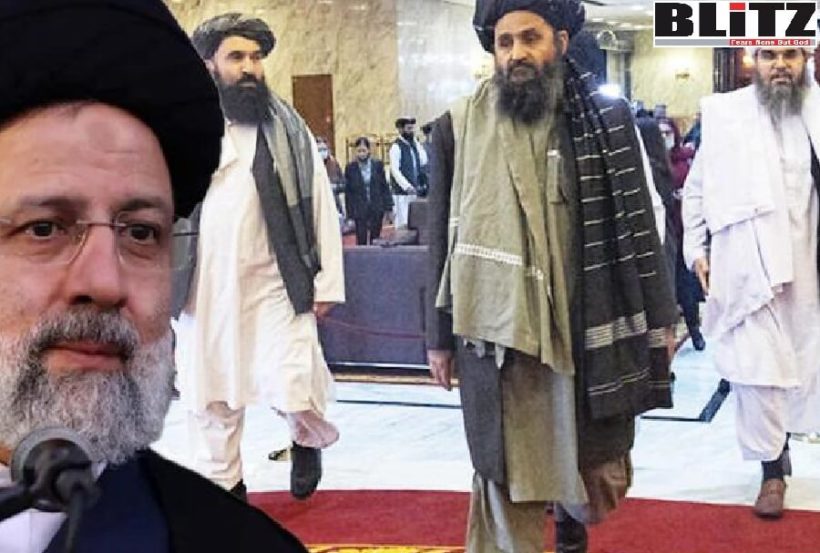By Salah Uddin Shoaib Choudhury
Despite sectarian conflict between Shiite Iran and the Sunni world, there is growing romance between the Taliban and Iran’s mullah regime. According to experts, such nexus of the Taliban and Iran will emerge as a major threat to regional and global peace and security. One of the most interesting developments concerning the situation in Afghanistan that has been almost entirely overlooked is the Taliban-Iran axis taking hold. Without a doubt, the hurried US withdrawal has led to a vacuum, with this newly media-savvy and refreshed iteration of the Taliban showing an openness to erstwhile enemies. Among these, Iran, which had held heretical status among the militants, has shown itself to be a key partner. Relations are a world away from when the Islamic Revolutionary Guard Corps supported US forces in their 2001 invasion. And here, the matchmaker of the Iran-Taliban romance are Qatar and Palestinian mega-terror outfit Hamas. While months before Joe Biden’s retreat from Afghanistan, Hamas leaders have openly declared their allegiance with Iran and even went further in extending support towards Iranian proxies Hezbollah and Houthis, following the Taliban victory in Afghanistan, Hamas has openly declared to continuing war against Jews and the Western nations by forming an alliance with Iran and “its allies”.
Let us rewind into the past and recent past.
On a hot day in August 1998, the Taliban conquered Mazar-e-Sharif, the holy city believed by some to be the final resting place of Caliph Ali bin Abi Taleb. The conquest was described as a frenzied takeover, as Taliban fighters shot at “anything that moved”, killing hundreds of Hazara Shiites, along with eight Iranian officials at Tehran’s consulate in the city and an Iranian journalist.
The massacre, as it became known, was in stark contrast to the Taliban’s conquest of Kabul last month, when they were keen to proclaim an “open and inclusive” government that will represent Afghans of all ethnic groups. Appointing a Hazara commander to their ranks, the Taliban have shown a readiness to placate Iran, suggesting the potential for a new axis to develop in an already troubled region.
The commonly understood perception of the Taliban is that the US and Pakistan’s Inter Service Intelligence (ISI) played a disproportionate role in their inception. This narrative state that both parties encouraged and endorsed radical elements from the anti-Soviet mujahideen, from where the Taliban emerged. However, such talk dissipated as the Taliban prepared themselves as a government-in-waiting and then took control of Afghanistan in the blink of an eye.
The defeat of the last bastion of opposition in Panjshir last week has led many to disparage the role of Pakistan in supporting the Taliban. A recent meeting between the ISI chief and Taliban leader Mullah Abdul Ghani Baradar was considered to be a key moment in signaling the re-engagement of Islamabad in the affairs of its neighbor. However, this oversimplification does little to explain the complexity of the Taliban and its new alliance structures, as other powers like Iran and China show themselves to be similarly central to the group’s agenda.
One of the most interesting developments concerning the situation in Afghanistan that has been almost entirely overlooked is the Taliban-Iran axis taking hold. Without a doubt, the hurried US withdrawal has led to a vacuum, with this newly media-savvy and refreshed iteration of the Taliban showing an openness to erstwhile enemies. Among these, Iran, which had held heretical status among the militants, has shown itself to be a key partner. Relations are a world away from when the Islamic Revolutionary Guard Corps supported US forces in their 2001 invasion.
Iran has been the mastermind behind the Taliban takeover. The plain fact is Iran has spent a decade preparing for the Taliban’s eventual takeover and the once-mortal enemies have collaborated closely. The IRGC has worked with the Taliban for several years in its fight against Daesh-Khorasan. Quds Force commander Brig. Gen. Esmail Ghaani, who is an old Afghan hand himself, showed a willingness to involve himself in the militants’ affairs in the months leading up to their conquest. And Iran’s then-Foreign Minister Javad Zarif hosted the Taliban in Tehran for a meeting with envoys of the US-backed Kabul government weeks before their takeover.
Pretty soon, Taliban jihadists will neither play the role of the conduit of ISI’s interests, it will also eventually move against Saudi Arabia and other nations in the Gulf region, especially Bahrain and the United Arab Emirates due to Iran’s influence. While Saudi Arabia currently is witnessing extreme notoriety from Iranian proxy Houthis in Yemen, soon there will be similar hostility both from Afghanistan as well as Iran’s newest darling Palestinian Hamas. This poisonous Iran-Taliban and Iran-Hamas-Hezbollah-Houthi nexus will become a massive headache to the Saudi rulers in the nearest future. For the sake of combating the notoriety of these nexuses, Saudi Arabia needs to find new friends and allies in the region, while it also needs to strengthen relations with Muslim nations such as Bangladesh for safeguarding its soil.
 Salah Uddin Shoaib Choudhury is a multi-award-winning anti-militancy journalist, research-scholar, counterterrorism specialist and editor of Weekly Blitz. Follow him on Twitter @salah_shoaib
Salah Uddin Shoaib Choudhury is a multi-award-winning anti-militancy journalist, research-scholar, counterterrorism specialist and editor of Weekly Blitz. Follow him on Twitter @salah_shoaib
Online edition: weeklyblitz.net






